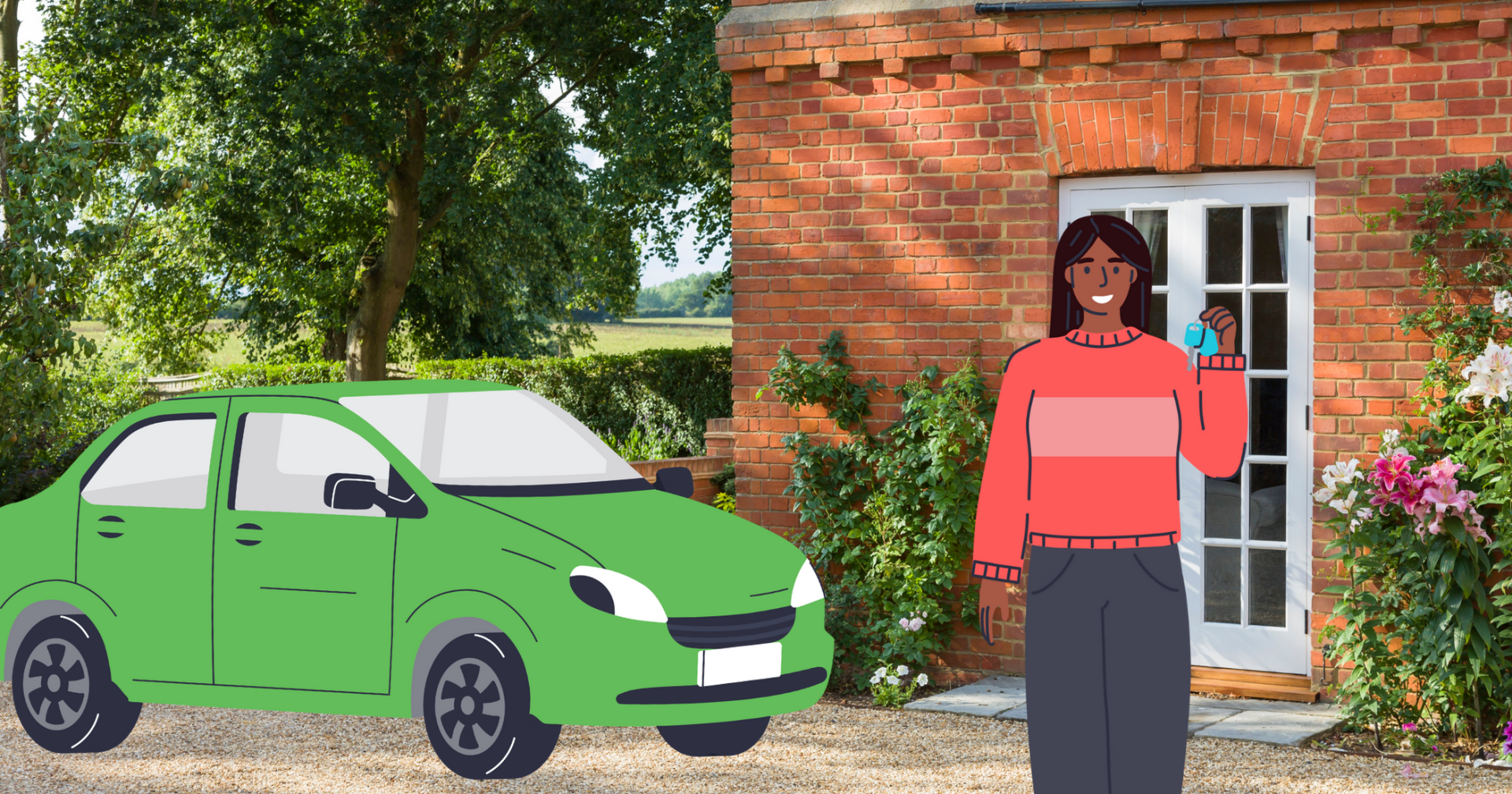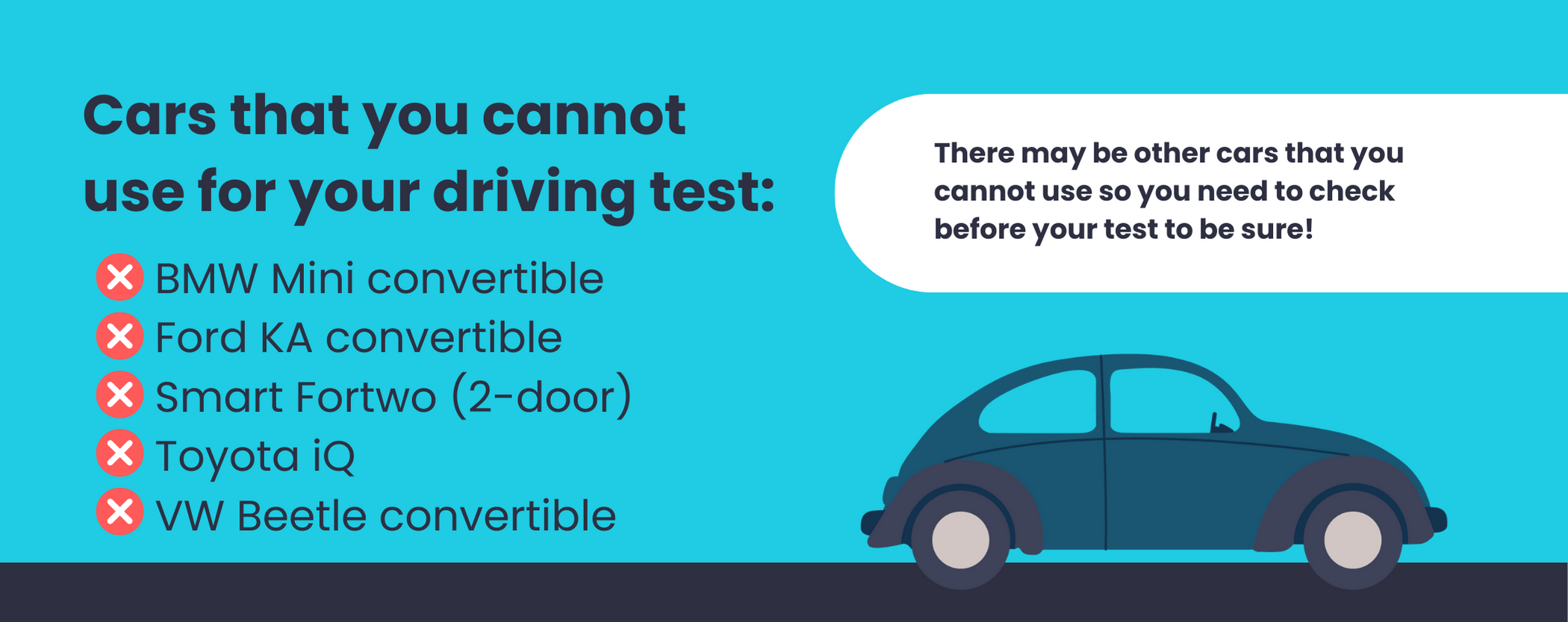
Which Time of Year Has the Highest Pass Rate for Driving Theory Tests?
Explore how age impacts driving skills, focusing on challenges faced by young and older drivers, and tips for staying safe on the road.
As a learner driver, your practical driving test is often the most important part of the journey! The deciding factor for if you become a full licence holder or if you stay as a learner driver. Before you take your driving test you need to think about what vehicle you will use. The common choice is to use a driving instructors’ vehicle. Did you know that you may be able to use your own car, a family car or a rental for your test?
We are going to look into all that you need to know about using your own car for your driving test. So if you use your own car for your driving test you will be prepared!
Before you can even think of using your own car for your driving test you must make sure that your vehicle is fully maintained and meets all the requirements for a driving test.
If you bring your own car on the day and it does not meet the requirements or has any issues, you risk having your test cancelled without a refund.
Your car must have the type of transmission you want your licence in. If you want a manual licence but your car is an automatic if you pass you will only have a full automatic licence and will not be able to drive manual vehicles.
Your vehicle must be taxed, have an MOT (if over 3 years old) and be insured for your driving test.
If you’re not sure, you should check with your insurer to ensure you are covered.
The tyres on the car must have a tread depth of 1.6mm, with no damage, no space saver tyres and have 4 wheels that meet the maximised authorised mass (MAM) of no more than 3,500kgs.
There must not be any warning lights showing and the vehicle must be able to reach 62mph. There must be seatbelts and a fixed head restraint. You will also need some extras; L plates (or D plates in Wales) on the front and back of the vehicle and an extra interior rear-view mirror for the examiner to use.
The car should be clean with no rubbish on the dashboard, doors, footwells, seats or cup holders. You should not smoke inside the vehicle before the test.
If you have a dashcam this cannot record audio from the inside of the car and should only face outside the vehicle.
If you are using a hire car, you must ensure it is fitted with dual controls and meets all the other rules.
There are some cars that are not acceptable to use on your driving test. This is because they do not give the examiner all-round vision:
To insure your car for the driving test you have the option of being added on as an additional driver to someone else’s policy. This means that they will have to be the owner and keeper of the car and have their own insurance policy in place. With some insurers they will then be able to add a learner on as an additional driver. This will come with additional cost to the policy which can sometimes be quite expensive. The risk associated with doing this is that an accident could affect their No Claims Bonus.
Another option is Learner Driver Insurance. This is a policy specifically for the learner driver and allows them to get their own insurance policy. You can take this out on your own car, a friend’s car, or a family member’s car. If someone else owns the car, they must insure it elsewhere. If you are the owner and keeper of the car, you can have just a learner policy in place! Collingwood Learner Driver Insurance covers you for your driving test, provided your vehicle fits the criteria.
If you are looking for insurance just for your practical driving test our short-term policies are available from 28 days. Which could give you cover for some extra practice in your own car before your test too!
| Advantages | Disadvantages |
| Using the car that you have been having private practice in, that you feel comfortable in. | You must buy extras for the test, L-plates and an extra mirror. |
| You don’t have to make sure your instructor is free on the day of your test. | You will be responsible for repairs if there is an accident or incident. |
| You could have private practice with a supervising driver before the test, to help prepare. | You will not have dual controls, So the examiner will not be able to intervene in unsafe situations. |
| Familiarity with the vehicle rather than renting a car that you are not familiar with if your instructor is not available. | There will be extra cost for insurance compared to using the instructor’s car where you will just have to pay the lesson cost. |
| You could book your test more easily as you will not have to arrange a vehicle to use | You may not be able to practice with your instructor before the test as they may have a lesson booked. |
After you complete your practical driving test there are some things you should know! Whether you pass or fail you cannot drive the car back. This is because if you fail you may not be in a good headspace for driving. If you pass you are no longer a learner driver, so your insurance policy is no longer valid. 
Since you always need a supervising driver with a Learner Driver Insurance policy you should have someone with you at the test centre. With a Collingwood policy they will be covered in your car to drive you home after.
Once you are home and if you have passed, remember to cancel your learner driver policy and set up insurance as a full licence holder. This will keep you covered on the road! If you fail give yourself a few hours to process and calm down before heading back out in your car with your supervising driver.
In conclusion, the decision to use your own car for your driving test is a significant one, with both advantages and considerations. While it provides the comfort of familiarity and flexibility in scheduling, it demands attention to meeting all the necessary criteria and incurring additional costs for insurance and equipment.
Whether you opt for your own car or rely on an instructor’s vehicle, preparation is key. Understanding the requirements, ensuring your vehicle meets them, and securing appropriate insurance are important steps toward a successful test day.
Ultimately, whichever vehicle you choose, the goal remains the same. To demonstrate your proficiency and readiness to become a licensed driver. So, whether you navigate the test in your own car or another, be sure to demonstrate confidence, and safe driving practices to your examiner.
Commonly asked questions about using your own car for a driving test
No, you don’t have to use your own car. However, the test centre won’t provide a vehicle, so you’ll need to borrow from an instructor or rent one.
Yes, it’s possible to use a rental car for your test. It needs to meets all the necessary criteria outlined by the test regulations and is fitted with dual controls.
Yes, you’ll need learner driver insurance to ensure you’re covered during the test. Options include adding yourself as an additional driver on someone else’s policy or obtaining a learner driver insurance policy.
No, you don’t need dual controls if you’re using your own car or borrowing from a friend or family member.
If your car fails to meet the requirements, they will cancel your test without providing a refund. It’s essential to ensure your vehicle complies with all regulations beforehand. If you are aware that your car does not meet the requirements you should ask your instructor if you can borrow their car or look to rent a vehicle. This may prevent the test centre from turning you away on the day.
Yes, there will be additional costs for insurance, purchasing L-plates, an extra mirror, and ensuring your vehicle meets all criteria.
Yes, practicing with a supervising driver in your own car can help you prepare for the test and feel more confident behind the wheel.
If you pass, your learner driver insurance policy is no longer valid, and you’ll need to obtain insurance as a full licence holder. If you fail, you can continue using your learner driver insurance policy for practice with a supervising driver.
Yes, some vehicles, such as convertibles and others that don’t provide adequate visibility for the examiner, may not be acceptable for the practical driving test. It’s essential to check if your vehicle meets the requirements before the test.
You will be logged out in seconds. Do you want to stay signed in?